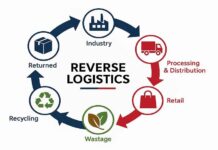Due to labor shortages and a general desire to better automate distribution operations, warehouse robotics continues to attract a lot of interest. Similarly, the number of robot manufacturers is increasing. According to one estimate, almost 50 suppliers participated in the major MODEX exhibition held in Atlanta in March 2024.
Autonomous mobile robots (AMRs) are particularly popular for cooperative order pickup in distribution settings. This application significantly reduces the amount of time that humans must travel by having the AMR meet pickers at the appropriate inventory location, after which the workers deposit the picks in totes on the robot, which then travels on to another site/picker or off to packing.
The future of many, if not most, businesses is one of heterogeneous robots—various kinds of bots from different suppliers functioning in a particular facility—even if the use of robots in distribution is still in its infancy. In order to automate the flow of information and tasks, these various robots will frequently need to interface with one another, either directly or indirectly through the use of an integration platform, as warehouse robotics advances. This is sometimes referred to as “interoperability,” and it is a crucial idea for businesses organizing warehouse robotics projects. The ultimate objective is to create “plug and play” environments where processes can be modified over time and additional robots can be readily added to the automation mix.
What makes interoperability crucial?
Think about the example that follows. Perhaps 20 AMRs are purchased by a corporation to facilitate collaborative selection. More AMRs are required to accommodate expansion a few years later. However, due to changes in stock keeping unit (SKU) qualities, design, pricing, or other considerations, the firm now chooses another AMR from a different vendor.
Interoperability will enable a business to add new AMRs to the mix while maintaining its current AMRs. In addition to fundamental connectivity, a business will want to manage the robots from both suppliers in a way that makes them function as a single fleet, including visibility, job assignment, performance monitoring, and more.
That exemplifies the essence of interoperability.
Are standards for interoperability in place?
The robotics industry is working on certain projects to provide cross-vendor integration protocols that will greatly facilitate interoperability. These standards, including the Mass Robotics 2.0 AMR Interoperability Standard and VDA5050 (a standardized interface for autonomous guided vehicles), are still in the early stages of development or are not yet commonly utilized.
Additionally, a lot of companies have begun to support what is known as a “robot operating system” (ROS/ROS2). However, the interoperability issue is not entirely addressed by this informal, open source framework, which is not a complete standard.
The substitute robotics platform
There are still a few ways for businesses to achieve interoperability in the absence of practical standards. One is the conventional method of manually configuring interfaces between various robots and between robots and software programs like warehouse execution systems (WES) and warehouse management systems (WMS).
The drawbacks of this strategy are widely recognized. These include lengthy development periods, the high expense of completing the integrations, a substantial lack of future flexibility, and an additional element of risk.
Using a platform strategy is a superior option. This raises the question: What is a platform for robotics?
An on-premises or cloud-based middleware ecosystem that offers a range of services and capabilities, from integration to fulfillment planning and execution, is known as a robotics software platform. Additionally, it serves as a link between other corporate software programs and automation systems.
Integration is actually the first step toward the success of any robotic platform. Advanced technologies that allow for flexible “no code/low code” techniques to linking robot fleets are part of that integration capabilities.
AI may significantly speed up the frequently laborious data-mapping process, and the appropriate platform can also interact with WMS/WES or other software programs more quickly. Real-time, bidirectional access to the WMS/WES data is made possible by connecting the robots to the platform once the WMS/WES has been linked.
Such a platform links several automated operations and provides interoperability across robot kinds. A straightforward illustration would be when a robot required to transport items from receiving to reserve storage receives a signal from the platform informing another robot that a new putaway assignment is available for fulfillment.
Additional interoperability factors
Businesses should take into account the following interoperability-related features that a particular warehouse robotics platform may provide in order to optimize interoperability opportunities:
Integration flexibility based on robot software functionality: Software from various robot providers varies in maturity. To ensure flexibility in robot selection, an interoperability platform should be able to collaborate with robotic suppliers at any software functional capability level.
Consistency of user experience: In order for interoperability to be functionally successful, users should be able to engage and transition between jobs with ease thanks to a consistent user interface throughout robotic-enabled operations.
Flexible communication protocols: A platform should support a large number of different protocols, including web services, ROS/ROS2.0, VDA5050, socket communication (a two-way communication link between a server and a client program), application programming interfaces (APIs), and more.
Observability: With regard to their movements and activities, AMRs in particular will provide vast amounts of data that may be utilized for analytics. To provide a single dashboard, the robotics platform should standardize data packets from many suppliers.
Safety and risk reduction: By comprehending the safety procedures of various machines and developing a standard set of guidelines, a robotics platform may assist in achieving safety across various robot kinds. The extended fleet manager that operates within the platform and sits above the fleet managers of each distinct AMR brand will have these guidelines.
Even if some of these features might not be important in the early stages of a company’s warehouse robots development, they might be useful later on, so take a look at them now.
The Need for Interoperability
The future of the distribution center floor will be robotics of various kinds and suppliers for a sizable and expanding number of businesses. These heterogeneous settings must include interoperability solutions to allow systems of various sorts to function as a single fleet in order to maximize flow and production. A robotics integration and execution platform will offer a compelling substitute for conventional programming-heavy methods for the time being, even though standards to assist with all of this may be developed in the future.

























